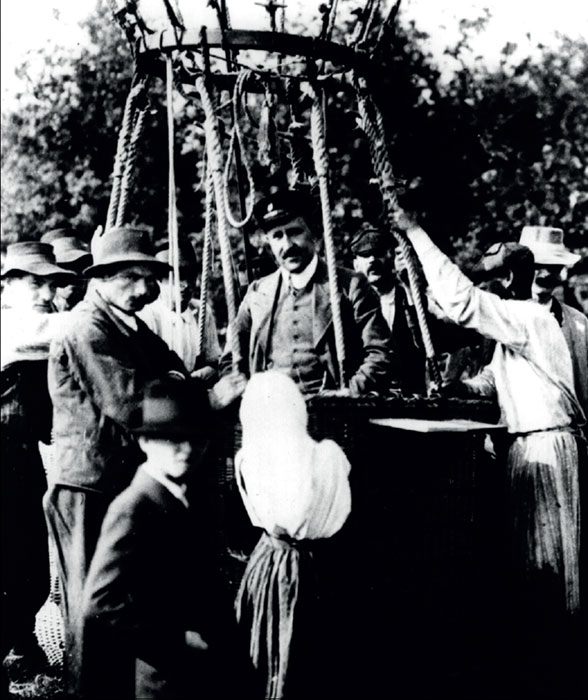What Victor Hess found out when he took to the skies in 1912.

“We took off at 6.12 a.m. from Aussig on the Elbe. We flew over the Saxony border by Peterswalde, Struppen near Pirna, Birchofswerda and Kottbus. The height of 5350 m was reached in the region of Schwielochsee. At 12.15 p.m. we landed near Pieskow, 50 km east of Berlin.”
The flight on 7 August 1912 was the last in a series of balloon flights that Victor Hess, an Austrian physicist, undertook in 1912 with the aid of a grant from what is now the Austrian Academy of Sciences in Vienna. The previous year, he had taken two flights to investigate the penetrating radiation that had been found to discharge electroscopes above the Earth’s surface. He had reached an altitude of around 1100 m and found “no essential change” in the amount of radiation compared with observations near the ground. This indicated the existence of some source of radiation in addition to γ-rays emitted by radioactive decays in the Earth’s crust.
For the flights in 1912 he equipped himself with two electroscopes of the kind designed by Wulf, which were “perfectly airtight” and could withstand the pressure changes with altitude. The containers were electrolytically galvanized on the inside to reduce the radiation from the walls. To improve accuracy the instruments were equipped with a new “sliding lens” that allowed Hess to focus on the electroscopes’ fibres as they discharged without moving the eyepiece and hence changing the magnification.
Hess undertook the first six flights from his base in Vienna, beginning on 17 April 1912, during a partial solar eclipse. Reaching 2750 m, he found no reduction in the penetrating radiation during the eclipse but indications of an increase around 2000 m. However, on the following flights he found that “the weak lifting power of the local gas, as well as the meteorological conditions” did not allow him to ascend higher.
So, on 7 August he took off instead from Aussig [today Ústí nad Labem in the Czech Republic], several hundred kilometres north of Vienna. Although cumulus clouds appeared during the day, the balloon with Hess and the electrometers were never close to them; there was only a thin layer above him, at around 6000 m. The results of this flight were more conclusive. “In both γ-ray detectors the values at the greatest altitude are about 22–24 ions higher than at the ground.”
Before reporting these results, Hess combined all of the data from his various balloon flights. At altitudes above 2000 m the measured radiation levels began to rise. “By 3000 to 4000 m the increase amounts to 4 ions, and at 4000 to 5200 m fully to 16 to 18 ions, in both detectors.”
He concludes: “The results of the present observations seem to be most readily explained by the assumption that a radiation of very high penetrating power enters our atmosphere from above … Since I found a reduction … neither by night nor at a solar eclipse, one can hardly consider the Sun as the origin.”
Although continuing research discovered more about the particles involved, the exact location of the source remains a mystery that continues to drive adventurous research in astroparticle physics.
• The extracts are from a translation of the original paper by Hess, taken from Cosmic Rays by A M Hillas, in the series “Selected readings in physics”, Pergamon Press 1972.








